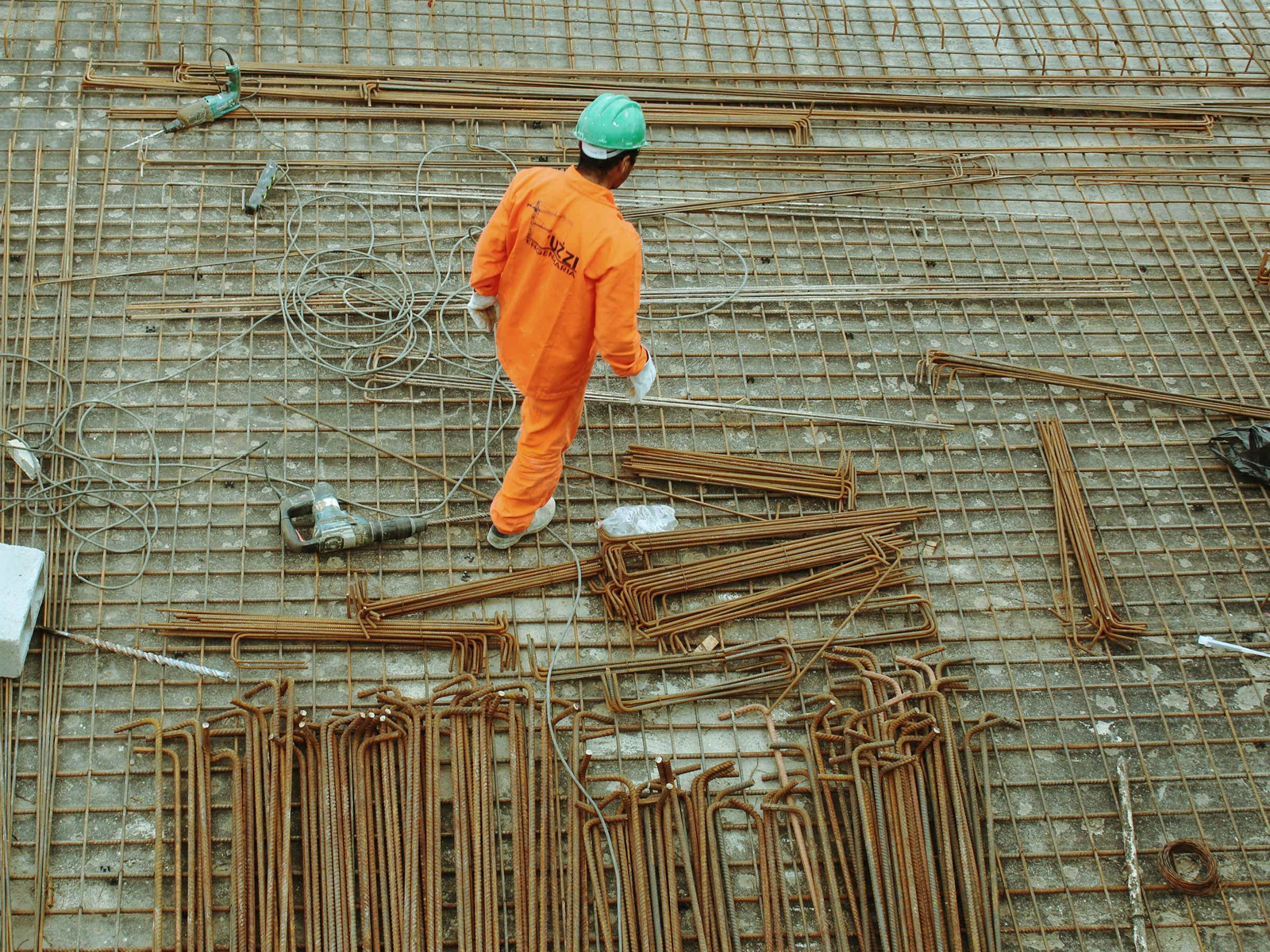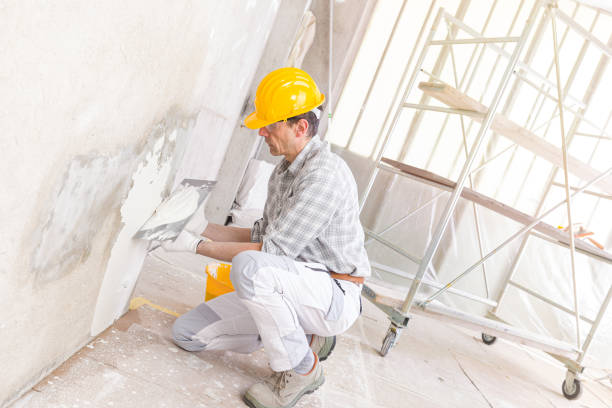Construction Painter & Decorator ( 6 month course)
Construction Painter & Decorator click here
Brief Job Description
This job role is responsible for applying paint on masonry, metallic and wooden surfaces to produce
decorative finishes. The individual should have good knowledge of painting techniques and inclination for
safe work practices.
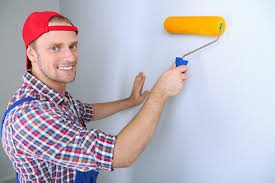
Personal Attributes
The individual is expected to be physically fit and able to work across various location and height,
withstanding extreme condition while working, should be organized, diligent, methodical, and able to
implement and maintain safety practices. The person should have independent ability to take quick
decisions and have good knowledge of painting techniques and be able to work within a team to handle
various painting tools and materials and work responsibly for own work within the defined limit
Apply OBD, acrylic and emulsion paints on various finished masonry surfaces
Description
This unit describes the skills and knowledge required to apply OBD (oil bound distemper), acrylic and
emulsion paints on various finished masonry surfaces
Scope
The scope covers the following :
Ensure preparation of base surfaces prior to painting and upkeep and maintenance of tools
Carry out preparation of paint mix using various constituents as per specification
Apply paint to produce a paint film of uniform thickness as per requirements
Elements and Performance Criteria
Ensure preparation of base surfaces prior to painting and upkeep and maintenance of tools
To be competent, the user/individual on the job must be able to:
PC1. carry out visual and physical inspection of the surface for suitability for painting works
PC2. measure the surface to be painted and calculate the appropriate quantity of required
materials as per applicability
PC3. ensure surface is free from dust, dirt and grease and is prepared appropriately prior to
application of paints
PC4. apply putty to fill gaps and depressions on the surface to be painted for preparation of a
leveled surface if required
PC5. ensure that adjacent surfaces are covered with drop cloths/ masking tape/paper and all
removable items/fixtures are removed prior to painting
PC6. ensure proper cleaning ,maintenance and upkeep of painting tools and equipments before
and after use
Carry out preparation of paint mix using various constituents as per specification
To be competent, the user/individual on the job must be able to:
PC7. select appropriate painting material and mixing ingredients as per requirement /specified
finish
PC8. identify base colour of paint as per the requirements/instructions
PC9. select appropriate colorants, suitable for colour match, to meet aesthetic requirements
PC10. mix specified amount of paint material with additives as per specified ratio
PC11. follow standard procedure for effective mixing and dilution of paints

PC12. add reducer/thinner/ water to adjust viscosity of paint mix as per requirement
Apply paint to produce a paint film of uniform thickness as per requirements
To be competent, the user/individual on the job must be able to:
PC13. apply primer coats of paint to the finished/leveled surfaces as per specifications
PC14. apply main coat of paint over primer coat within specified time limits as per specification
PC15. apply final coat as per required/specified tint
PC16. apply tackifier solvent or brush blast to roughen the surface in case recoat time of paint
exceeds specified time
PC17. clean the surface of each dried coat appropriately before application of the next coat
Knowledge and Understanding (KU)
The individual on the job needs to know and understand:
KU1. standard procedure for construction painting works
KU2. safety rules and regulation for handling and storing required painting tools, equipment and
materials
KU3. personal protection including the use of related safety gears & equipment
KU4. service request procedures for tools, materials and equipments
KU5. basic sketches / schematic working drawing relevant to painting works
KU6. basic principles of measurement, geometry and arithmetic calculation
KU7. linear conversion of units
KU8. units of measurements
KU9. how to select & use different painting tools (such as brushes, rollers , painting bucket,
stirrers, scrapers ,sand papers, putty blades, etc.) and appropriate painting materials and
mixing ingredients (such as scrape, primer, base color, tint base, colorants, varnishes,
enamel, etc.)
KU10. standard size of all painting tools, materials and components
KU11. methods of protecting adjacent surfaces prior to painting
KU12. how to mix the correct amount of paint material as per specified ratio
KU13. how to adjust viscosity of paint mix as per requirement
KU14. different reducers/thinners used for adjusting viscosity
KU15. application of primer as per requirement
KU16. adhesives used for binding coats of paint such as oil, turpentine, mildew remover, or other
preparations, and sand rough spots
KU17. various methods for surface preparation, prior to painting works
KU18. properties of putty and its use in surface preparation
Generic Skills (GS)
User/individual on the job needs to know how to:
GS1. write in one or more language, preferably in the local language of the site
GS2. read one or more language, preferably the local language of the site
GS3. read /sketches/routine working drawing or instructions provided for the work
GS4. read various sign boards, safety rules and safety tags etc.
GS5. read instructions related to exit routes during emergency at the workplace
GS6. speak in one or more language, preferably in one of the local language of the site
GS7. listen and follow instructions given by the superior
GS8. communicate orally and effectively with co-workers
GS9. decide whether his workplace is safe for working and also the relevant work is not creating
hazardous conditions for others
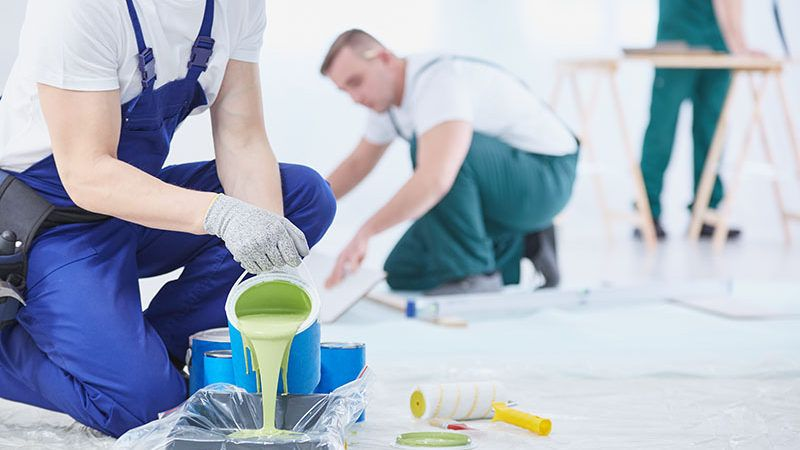
GS10. decide whether surface is suitably prepared for application of paintss
GS11. decide on suitability of colorants based on colour match
GS12. plan work and organize required resource in coordination with team member and superior
GS13. complete work as per agreed time and quality
GS14. apply tackifier solvent or brush blast to roughen the surface if recoat time of paint is
exceeded
GS15. rectify the surface defects prior to painting
GS16. rectify consistency and colour of painting mix prior to painting
GS17. resolve any conflict within the team
GS18. calculate the appropriate quantity of required materials as per applicability
GS19. optimize resources
GS20. minimize wastages
GS21. revert to superior for selection/sorting of materials
GS22. evaluate the complexity of the tasks to and seek assistance and support wherever required
from the superior
GS23. identify and assess how violation of any safety norms may lead to accidents
Apply paint on metallic / structural steel fabricated assemblies
Description
This unit describes the skills and knowledge required to apply paint on metallic / structural steel fabricated assemblies
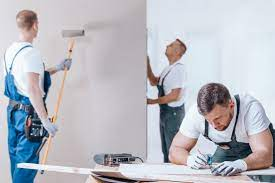
Scope
The scope covers the following :
Ensure preparation of base surfaces and upkeep and maintenance of relevant tools and accessories
Carry out preparation of paint mix using various constituents as per specification
Apply coatings of paint to produce a paint film of uniform thickness
Elements and Performance Criteria
Ensure preparation of base surfaces and upkeep and maintenance of relevant tools and accessories
To be competent, the user/individual on the job must be able to:
PC1. carry out visual and physical inspection of the surface for suitability
PC2. ensure the removal all loose mill scale, loose rust, loose paint and other loose detrimental
foreign matter prior to application of paint
PC3. ensure fabricated steel /metallic items are cleaned, washed, stripped of previous paints and
corrosion and surface is leveled evenly by filling depressions
PC4. ensure proper cleaning of all bolts, nuts, welds, and field rivet heads
PC5. ensure machines, equipment, and work areas is cleaned appropriately using water, solvents
and other cleaning aids
PC6. ensure use of appropriate tools such as rotary or impact power tools to remove rust (rust
scale) ,weld slag, flux and weld spatter
PC7. ensure proper cleaning ,maintenance and upkeep of painting tools and equipment’s before
and after use
Carry out preparation of paint mix using various constituents as per specification
To be competent, the user/individual on the job must be able to:
PC8. identify base colour as per the requirements/instructions
PC9. select appropriate colorants suitable for colour match, to meet aesthetic requirements
PC10. mix specified amount of paint material with additives as per specified ratio
PC11. follow standard procedure for effective mixing and dilution of paints
PC12. add reducer/thinner/ water to adjust viscosity of paint mix as per requirement
Apply coatings of paint to produce a paint film of uniform thickness
To be competent, the user/individual on the job must be able to:
PC13. apply primer coat as per instruction/specification
PC14. apply an appropriate primer for rusted metal surface as per specification
PC15. apply specified number of coats of appropriate primer to prevent any oxidization on metal
PC16. ensure that the primer coat is allowed to dry for specified time prior to application of any
subsequent coat
PC17. apply appropriate coats of paint as per the requirements/specification
PC18. ensure appropriate drying time between two subsequent coats

Knowledge and Understanding (KU)
The individual on the job needs to know and understand:
KU1. standard procedure for construction painting works
KU2. safety rules and regulation for handling and storing required painting tools, equipment and
materials
KU3. personal protection including the use of related safety gears & equipment
KU4. service request procedures for tools, materials and equipment’s
KU5. basic sketches / schematic working drawing relevant to painting works
KU6. basic principles of measurement, geometry and arithmetic calculation
KU7. linear conversion of units
KU8. units of measurements
KU9. how to select & use different painting tools (such as brushes, rollers , painting bucket,
stirrers, scrapers ,sand papers, putty blades, etc.) and appropriate painting materials and
mixing ingredients (such as scrape, primer, base color, tint base, colorants, varnishes,
enamel, etc.)
KU10. standard size of all painting tools, materials and components
KU11. methods of protecting adjacent surfaces prior to painting
KU12. how to mix the correct amount of paint material as per specified ratio
KU13. how to adjust viscosity of paint mix as per requirement
KU14. adhesives used for binding coats of paint such as oil, turpentine, mildew remover
KU15. how to set up and operate rotary or impact power tools for painting on metallic surface
KU16. importance of preventing the formation of burrs, sharp ridges and sharp cuts
KU17. how to identify welding defects such as flux, weld spatter and surface defects and how to
how to hide the defects while painting
KU18. how to carry out proper cleaning of all bolts, nuts, welds, and field rivet heads
KU19. how to apply different type of primers such as zinc chromate primer, farrow and ball metal
primer
KU20. time gap between application of two coats of primer/paints
Generic Skills (GS)
User/individual on the job needs to know how to:
GS1. write in one or more language, preferably in the local language of the site
GS2. read one or more language, preferably the local language of the site
GS3. read /sketches/routine working drawing or instructions provided for the work
GS4. read various, sign boards, safety rules and safety tags , instructions relatedto exit routes
during emergency at the workplace
GS5. instructions related to exit routes during emergency at the workplace
GS6. speak in one or more language, preferably in one of the local language of the site
GS7. listen and follow instructions given by the superior
GS8. orally and effectively communicate with co-workers
GS9. decide whether his workplace is safe for working and also the relevant work is not creating
hazardous conditions for others
GS10. decide whether surface is suitably prepared for application of paints
GS11. decide on suitability of colorants based on color match
GS12. decide on tools used for surface preparation
GS13. plan work and organize required resource in coordination with team member and superior
GS14. complete work as per agreed time and quality
GS15. prevent any oxidization on metal by applying specified number of coats of appropriate
primer
GS16. resolve any conflict within the team
GS17. calculate the appropriate quantity of required materials as per applicability
GS18. ensure appropriate drying time between two subsequent coats
GS19. optimize resources
GS20. minimize wastages
GS21. revert to superior for selection/sorting of materials
GS22. evaluate the complexity of the tasks to and seek assistance and support wherever required
from the superior
GS23. identify and assess how violation of any safety norms may lead to accidents
Apply, paint ,varnish & polish on wooden windows, doors, partitions, panels & other wooden surfaces
Description
This unit describes the skills and knowledge required to apply, paint ,varnish & polish on wooden windows, doors, partitions, panels & other wooden surfaces
Scope
The scope covers the following :
Ensure preparation of base surfaces and upkeep and maintenance of relevant tools and accessories
Carry out preparation of paint and varnish using various constituents as per specification
Apply coatings of paint, varnish and polish to produce a desired finish
Elements and Performance Criteria
Ensure preparation of base surfaces and upkeep and maintenance of relevant tools and accessories
To be competent, the user/individual on the job must be able to:
PC1. carry out visual and physical inspection of the surface for suitability
PC2. ensure that all loose & detrimental foreign matter is removed by using appropriate tools
PC3. brush bleaching agents on wood surface to restore natural color of wood
PC4. treat warped or stained surfaces as per specification to restore original contours and colors
PC5. fill gaps/depressions with appropriate wood filler, if required
PC6. smooth, shape, and touch-up surface using sandpaper, pumice stones, steel wool, chisels,
sanders, or grinders

PC7. ensure that adjacent surfaces are covered with drop cloths/ masking tape/paper and all
removable items/accessories /fixtures are removed prior to painting
Carry out preparation of paint and varnish using various constituents as per specification
To be competent, the user/individual on the job must be able to:
PC8. select appropriate finishing ingredients such as paint, stain, lacquer, shellac, or varnish as
per specification / instructions
PC9. select appropriate colorants suitable for color match, to meet aesthetic requirements
PC10. mix specified amount of paint material with additives as per specified ratio
PC11. follow standard procedure for effective mixing and dilution of paint and varnish
PC12. add reducer/thinner/ water to adjust viscosity of paint mix as per requirement
Apply coatings of paint, varnish and polish to produce a desired finish
To be competent, the user/individual on the job must be able to:
PC13. apply a primer coat of paint/varnish to the wood surface as per specification
PC14. apply paint/varnish coat of specified thickness after the primer has dried for specified time
PC15. carry out sanding of the surface using appropriate tools
PC16. apply coat of putty/wood filler wood and sand the applied coat
PC17. apply finished coats of paint/varnish to produce smooth surfaces of uniform thickness
PC18. apply toners, highlights, glazes or shades to obtain desired finish as per specifications
PC19. apply lacquer or other sealers as per specification
PC20. carry out polishing of the varnished surface using steel wool, pumice, rotten stone or other
materials, depending on the shine desired/specified
Knowledge and Understanding (KU)
The individual on the job needs to know and understand:
KU1. standard procedure for construction painting works
KU2. safety rules and regulations to handle required painting tools, tackles and equipment
required to perform the painting work
KU3. personal protection including the use of the related safety gears, safety equipment & safety
drills that may be required
KU4. service request procedures for tools, materials and equipment’s
KU5. basic sketches / schematic working drawing relevant to painting works
KU6. basic principles of measurement, geometry and arithmetic calculation
KU7. units of measurements and conversion of units
KU8. how to select & use different painting tools (such as brushes, rollers , painting bucket,
stirrers, scrapers ,sand papers, putty blades, etc.) and appropriate paint materials and
mixing ingredients (such as scrape, primer, base color, tint base, colorants, varnishes,
enamel, etc.)
KU9. standard size of all painting tools, materials and components
KU10. methods of protecting adjacent surfaces prior to painting
KU11. how to mix the correct amount of paint material as per specified ratio
KU12. adhesives used for binding coats of paint such as oil, turpentine, mildew remover
KU13. types of painting related ingredients such as paint, stain, lacquer, shellac, or varnish, etc.
KU14. remove accessories prior to finishing, and mask areas that should not be exposed to
finishing processes or substances
KU15. importance of applying bleaching agents on wood surface
KU16. how to apply finishes, varnishes, putty, primer, sealants, toners, etc.
KU17. correct method for polishing of wood

Generic Skills (GS)
User/individual on the job needs to know how to:
GS1. write in one or more language, preferably in the local language of the site
GS2. read one or more language, preferably the local language of the site
GS3. read /sketches/routine working drawing or instructions provided for the work
GS4. read instructions, guidelines, sign boards, safety rules and safety tags at the construction
site
GS5. read instructions related to exit routes during emergency at the workplace
GS6. speak in one or more language, preferably in one of the local language of the site
GS7. listen and follow instructions given by the superior
GS8. communicate orally and effectively with co-workers
GS9. decide whether his workplace is safe for working and also the relevant workis not creating
hazardous conditions for others
GS10. decide on suitability of surface for application of paint
GS11. decide on suitability of colorants for aesthetic requirements
GS12. decide on tools required for varnishing and polishing
GS13. plan work and organize required resource in coordination with team member and superior
GS14. complete work as per agreed time and quality
GS15. resolve any conflict within the team
GS16. bleach wood to obtain required stain of wood
GS17. determine quantity of material required for painting works
GS18. optimize resources
GS19. minimize wastages
GS20. revert to superior for selection/sorting of materials
GS21. evaluate the complexity of the tasks to and seek assistance and support wherever required
from the superior
GS22. identify and assess how violation of any safety norms may lead to accidents
Carry out minor repair of various painting faults
Description
This unit describes the skills and knowledge required to create ornamental designs on finished masonry,
surfaces using texture paints and stencil painting technique
Scope
The scope covers the following :
Identify common defects in painted surface
Carry out correction/remedial action of common painting defects
Elements and Performance Criteria
Identify common defects in painted surface
To be competent, the user/individual on the job must be able to:
PC1. check the painted surface thoroughly for defects
PC2. diagnose the painting problem and point out defects such as Orange peel, blushing, fade,
spotting and water marks, discoloration, chalking, cracks, seeds ,runs, Fish eyes (beads),
blemished metallic finish, pin holes, abrasive marks, peeling, putty marks, blisters & shrinkage
PC3. understand the nature of defect and carry out remedial action as per applicability
• Carry out correction/remedial action of common painting defects
To be competent, the user/individual on the job must be able to:
PC4. polish the defects with appropriate compound for common defects like orange peel, blushing,
fade, spotting and water marks, discoloration, chalking, cracks, seeds, runs
PC5. carry out flattening of the defect using whetstone followed by application of top coat of paint,
for defects like Fish eyes (beads), blemished metallic finish, pin holes, abrasive marks, peeling
PC6. carry out flattening of the defect using whetstone followed by application of appropriate
primer and a top coat of paint, for defects like Putty marks & shrinkage ,
PC7. carry out stripping of paint followed by application of putty and paint subsequently, for defects
like shrinkage, blisters and cracks
Knowledge and Understanding (KU)
The individual on the job needs to know and understand:
KU1. standard procedure for construction painting works
KU2. safety rules and regulations to handle required painting tools, tackles and equipment
required to perform the painting work
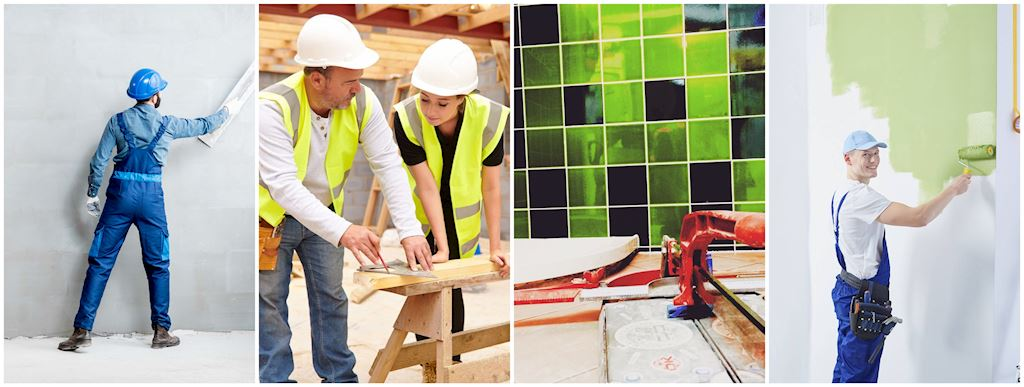
KU3. personal protection including the use of the related safety gears, safety equipment & safety
drills that may be required
KU4. service request procedures for tools, materials and equipment’s
KU5. basic sketches / schematic working drawing relevant to painting works
KU6. basic principles of measurement, geometry and arithmetic calculation
KU7. units of measurements and conversion of units
KU8. how to select & use different painting tools (such as brushes, rollers , painting bucket,
stirrers, scrapers ,sand papers, putty blades, etc.) and appropriate paint materials and
mixing ingredients (such as scrape, primer, base color, tint base, colorants, varnishes,
enamel, etc.)
KU9. standard size of all painting tools, materials and components
KU10. methods of protecting adjacent surfaces prior to painting
KU11. how to mix the correct amount of paint material as per specified ratio
KU12. how to adjust viscosity of paint mix as per requirement
KU13. different reducers/thinners used for adjusting viscosity
KU14. application of primer as per requirement
KU15. properties and use of adhesives used for binding coats of paint such as oil, turpentine,
mildew remover, or other preparations, and sand rough spots
KU16. knowledge of common painting defects detected
KU17. different remedial action to be taken for resolution of different defects
Generic Skills (GS)
User/individual on the job needs to know how to:
GS1. write in one or more language, preferably in the local language of the site
GS2. read one or more language, preferably the local language of the site
GS3. read sketches or instructions provided for the work
GS4. read instructions, guidelines, sign boards, safety rules and safety tags at the construction
site
GS5. read instructions related to exit routes during emergency at the workplace
GS6. speak in one or more language, preferably in one of the local language of the site
GS7. listen and follow instructions given by the superior
GS8. communicate orally and effectively with co-workers
GS9. decide whether his workplace is safe for working and also the relevant work is not creating
hazardous conditions for others
GS10. decide on appropriate course of remedial action for resolution of painting defects
GS11. plan work and organize required resource in coordination with team members and superiors
GS12. complete work as per agreed time and quality
GS13. diagnose the defect / issue faced in the painting problem
GS14. carry out remedial action for resolution of painting defect
GS15. resolve any conflict within the team
GS16. optimize resources
GS17. minimize wastages
GS18. revert to superior for selection/sorting of materials
GS19. evaluate the complexity of the tasks to and seek assistance and support wherever required
from the superior
GS20. identify and assess how violation of any safety norms may lead to accidents
Work effectively in a team to deliver desired results at the workplace
Description
This unit describes the skills and knowledge required to work effectively within a team to achieve the
desired results
Scope
The scope covers the following :
Interact and communicate effectively with co-workers, superiors and sub-ordinates across different
teams
Support co-workers, superiors and sub-ordinates within the team and across interfacing teams to
ensure effective execution of assigned task
Elements and Performance Criteria
Interact and communicate in effective and conclusive manner
To be competent, the user/individual on the job must be able to:
PC1. pass on work related information/ requirement clearly to the team members
PC2. inform co-workers and superiors about any kind of deviations from work
PC3. address the problems effectively and report if required to immediate supervisor appropriately
PC4. receive instructions clearly from superiors and respond effectively on the same
PC5. communicate to team members/subordinates for appropriate work technique and method
PC6. seek clarification and advice as per the requirement and applicability
Support co-workers to execute project requirements
To be competent, the user/individual on the job must be able to:
PC7. hand over the required material, tools tackles, equipment and work fronts timely to interfacing
teams
PC8. work together with co-workers in a synchronized manner
Knowledge and Understanding (KU)
The individual on the job needs to know and understand:
KU1. own roles and responsibilities
KU2. importance of effective communication and establishing strong working
KU3. risks of a failure in teamwork in terms of effects on project outcomes, timelines, safety at the
construction site, etc.
KU4. different modes of communication, and its appropriate usage
KU5. importance of creating healthy and cooperative work environment among the gangs of
workers
KU6. different activities within his work area where an interaction with other workers is required
KU7. applicable techniques of work, properties of materials used, tools and tackles used, safety
standards that co- workers might need as per the requirement
KU8. importance of proper and effective communication and the expected adverse
KU9. importance and need of supporting co-workers facing problems for smooth
Generic Skills (GS)
User/individual on the job needs to know how to:
GS1. write in at least one language, preferably in the local language of the site
GS2. read in one or more languages, preferably the local language of the site
GS3. read communication from team members regarding work completed, materials used, tools
and tackles used, support required
GS4. speak in one or more languages, preferably in one of the local language of the site
GS5. listen and follow instructions / communication shared by superiors/ co-workers regarding
team requirements or interfaces during work processes
GS6. orally communicate with co-workers regarding support required to complete the respective
work
GS7. decide on what information is to be shared with co-workers within the team or from
interfacing gang of workers
GS8. plan work and organize required resources in coordination with team members
GS9. complete all assigned task in coordination with team members
GS10. take initiative in resolving issues among co-workers or report the same to superiors
GS11. ensure best ways of coordination among team members
GS12. communicate with co-workers considering their educational / social background
GS13. evaluate the complexity of task and determine if any guidance is required from superiors
Plan and organize work to meet expected outcomes
Description
This unit describes the knowledge and the skills required for an individual to plan and organize own work in order to meet expected outcome
Scope
The scope covers the following :
Prioritize work activities to achieve desired results
Organize desired resources prior to commencement of work
Elements and Performance Criteria
Prioritize work activities to achieve desired results
To be competent, the user/individual on the job must be able to:
PC1. understand clearly the targets and timelines set by superiors
PC2. plan activities as per schedule and sequence
PC3. provide guidance to the subordinates to obtain desired outcome
PC4. plan housekeeping activities prior to and post completion of work
Organize desired resources prior to commencement of work
To be competent, the user/individual on the job must be able to:
PC5. list and arrange required resources prior to commencement of work
PC6. select and employ correct tools, tackles and equipment for completion of desired work
PC7. complete the work with allocated resources
PC8. engage allocated manpower in an appropriate manner
PC9. use resources in an optimum manner to avoid any unnecessary wastage
PC10. employ tools, tackles and equipment with care to avoid damage to the same
PC11. organize work output, materials used, tools and tackles deployed
PC12. processes adopted to be in line with the specified standards and instructions
Knowledge and Understanding (KU)
The individual on the job needs to know and understand:
KU1. importance of proper housekeeping
KU2. policies, procedures and work targets set by superiors
KU3. roles and responsibilities in executing the work for subordinates and self
KU4. standard practices of work to be adopted for assigned task
KU5. how to use available resources in a judicious and appropriate manner to minimize wastages or
damage
Generic Skills (GS)
User/individual on the job needs to know how to:
GS1. write in at least one language, preferably in the local language of the site
GS2. list out the assigned works and targets
GS3. read in one or more language, preferably the local language at the site
GS4. read communication from co-workers, superiors and notices from other departments as per
requirement of the level
GS5. speak in one or more language, preferably one of the local language at the site
GS6. listen and follow communication shared by co-workers regarding standard work processes,
resources available, timelines, etc.
GS7. communicate effectively with co-workers and subordinates
GS8. decide on what sequence is to be adopted for execution of work
GS9. plan and organize the materials, tools, tackles and equipment required to execute the work
GS10. complete all assigned task with proper planning and organizing
GS11. arrange or seek help to arrange for material, tools and tackles in case of shortfall
GS12. analyze areas of work which could result in a delay of work, wastage of material or damage
to tools and tackles
GS13. evaluate potential solutions to minimize avoidable delays and wastages at the construction
site
Work according to personal health, safety and environment protocol at construction site
Description
This NOS covers the skill and knowledge required for an individual to work according to personal health,
safety and environmental protocol at construction site
Scope
The scope covers the following :
Follow safety norms as defined by organization
Adopt healthy & safe work practices
Implement good housekeeping and environment protection process and activities
Elements and Performance Criteria
Follow safety norms as defined by organization
To be competent, the user/individual on the job must be able to:
PC1. identify and report any hazards, risks or breaches in site safety to the appropriate authority
PC2. follow emergency and evacuation procedures in case of accidents, fires, natural calamities
PC3. follow recommended safe practices in handling construction materials, including chemical
and hazardous material whenever applicable
PC4. participate in safety awareness programs like Tool Box Talks, safety demonstrations, mock
drills, conducted at site
PC5. select and operate different types of fire extinguishers corresponding to types of fires as per
EHS guideline
PC6. identify near miss , unsafe condition and unsafe act
Adopt healthy & safe work practices
To be competent, the user/individual on the job must be able to:
PC7. use appropriate Personal Protective Equipment (PPE) as per work requirements including:
Head Protection (Helmets), Ear protection Fall Protection, Foot Protection, Face and Eye
Protection, Hand and Body Protection, Respiratory Protection (if required)
PC8. handle all required tools, tackles , materials & equipment safely
PC9. follow safe disposal of waste, harmful and hazardous materials as per EHS guidelines
PC10. install and apply properly all safety equipment as instructed
PC11. follow safety protocol and practices as laid down by site EHS department
PC12. undertake and pass height pass test as per EHS guideline
Implement good housekeeping practices
To be competent, the user/individual on the job must be able to:
PC13. collect and deposit construction waste into identified containers before disposal, separate
containers that may be needed for disposal of toxic or hazardous wastes
PC14. apply ergonomic principles wherever required
Knowledge and Understanding (KU)
The individual on the job needs to know and understand:
KU1. reporting procedures in cases of breaches or hazards for site safety, accidents, and
emergency situations as per guidelines
KU2. types of safety hazards at construction sites
KU3. basic ergonomic principles as per applicability
KU4. the procedure for responding to accidents and other emergencies at site
KU5. use of appropriate personal protective equipment to be used based on various working
conditions
KU6. importance of handling tools, equipment and materials as per applicable
KU7. health and environments effect of construction materials as per applicability
KU8. various environmental protection methods as per applicability
KU9. storage of waste including the following at appropriate location: non-combustible scrap
material and debris, combustible scrap material and debris, general construction waste and
trash (non-toxic, non-hazardous), any other hazardous wastes and any other flammable
wastes
KU10. how to use hazardous material, in a safe and appropriate manner as per applicability
KU11. types of fire
KU12. procedure of operating different types of fire extinguishers
KU13. safety relevant to tools, tackles, & requirement as per applicability
KU14. housekeeping activities relevant to task
Generic Skills (GS)
User/individual on the job needs to know how to:
GS1. write in at least one language, preferably in the local language of the site
GS2. fill safety formats for near miss, unsafe conditions and safety suggestions
GS3. read in one or more language, preferably in the local language of the site
GS4. read sign boards, notice boards relevant to safety
GS5. speak in one or more language, preferably in one of the local language of the site
GS6. listen instructions / communication shared by site EHS and superiors regarding site safety,
and conducting tool box talk
GS7. communicate reporting of site conditions, hazards, accidents, etc.
GS8. not create unsafe conditions for others
GS9. keep the workplace clean and tidy
GS10. identify safety risks that affect the health, safety and environment for self and others
working in the vicinity, tackle it if within limit or report to appropriate authority
GS11. assess and analyze areas which may affect health, safety and environment protocol on the site
GS12. ensure personal safety behavior GS13. respond to emergency






